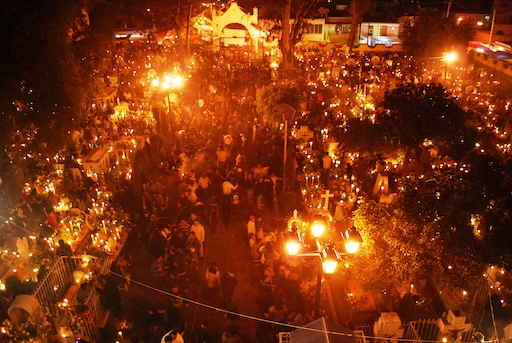
In most places, people visit cemeteries in silence — with whispers, flowers, and maybe a prayer. But in Mixquic, a small town on the southern edge of Mexico City, things are very different. Here, every year on November 1st and 2nd, families don’t just visit their dead — they spend the night with them. Literally. They bring blankets, food, music, candles, and memories. They stay until dawn, talking, laughing, sometimes crying. And in the flicker of thousands of candles, the cemetery becomes a living celebration of those who have passed.
This is Día de Muertos — the Day of the Dead — but it feels more like a family reunion that crosses the boundaries between life and death. In Mixquic, the phrase “rest in peace” doesn’t mean “rest alone.”
Where Life and Death Sit Together
Mixquic isn’t a tourist town, but during Día de Muertos, it becomes a magnet for Mexicans and foreigners alike. People come not for spectacle, but for the profound beauty of its rituals. The town’s small cemetery transforms into a glowing garden of orange cempasúchil (marigolds), flickering candles, sugar skulls, and personal tributes.
Each grave becomes a private altar. Families arrange photographs, bottles of soda or mezcal, mole, pan de muerto, and the favorite foods of the departed. There might be a radio playing the dead’s favorite tunes, or someone strumming a guitar softly at the foot of a tomb. Children curl up next to headstones as grandmothers tell stories of those buried beneath. It’s intimate, unguarded, and full of heart.
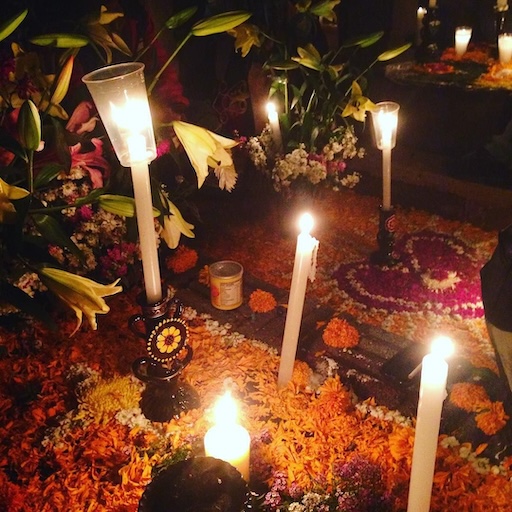
A Town Built on Memory
Mixquic’s name comes from Nahuatl — meaning “place of the cloud people” or “in the clouded place.” It was once an island in a lake, part of the ancient Xochimilco waterway system. Today, it feels like a town suspended in time. Its cobblestone streets, quiet plazas, and 16th-century church create the perfect setting for a celebration that’s all about honoring the past.
The town is deeply proud of its traditions. Schools prepare special altars. The church bell tolls 12 times on the evening of November 1st — a signal that the souls of children, known as los angelitos, are arriving. Families gather for prayer, then light the candles and begin their vigil. On the second night, the souls of adults are believed to return. And that’s when the real vigil begins — often lasting until sunrise.
Sleeping with the Dead
Why do they stay all night? Ask anyone in Mixquic and they’ll tell you: because that’s when the souls are with us. It’s not spooky — it’s sacred. The dead aren’t feared. They’re loved, missed, and welcomed home. To sleep by their grave is not an act of morbidity, but of closeness. It’s the Mexican way of saying: “We remember you. We still belong to each other.”
Some families bring folding chairs, tents, or blankets. Others simply lay down next to the tomb with a shawl and a candle. There’s often coffee, tamales, and laughter. It’s quiet, but not somber. People walk through the narrow paths between graves, admiring each altar, sharing stories with strangers. If you come, don’t bring a camera to intrude — bring curiosity and respect.
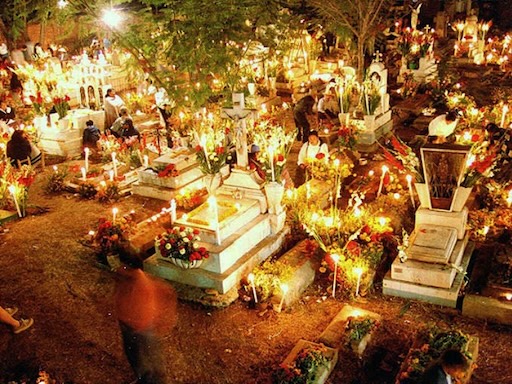
Light Against the Darkness
The most striking moment in Mixquic comes on the night of November 2nd, when the entire cemetery is bathed in candlelight. Thousands of tiny flames shimmer across the graves, and a warm, golden glow spreads across the night like a sunrise in reverse. It’s hauntingly beautiful — not because of fear, but because of the immense love that illuminates each grave.
In a world that often hides from death, Mixquic stares into it with open arms. It says: “We know you’re gone, but tonight, you’re home.” It’s not about mourning. It’s about reconnecting. About remembering that love doesn’t end at the tombstone.
More Than Just Tradition
Mixquic’s vigil isn’t just a tradition — it’s a way of life. It teaches something that’s easy to forget: that grief and joy can coexist, that death doesn’t always have to be cloaked in silence. It reminds us that our ancestors live on not just in memory, but in the meals we make, the stories we tell, and the nights we choose to spend with them — even if that means sleeping in a graveyard.
And what better place than this humble town — where ghosts are not scary, but welcomed guests; where every headstone is a doorway, not a dead end.
Planning a Visit?
If you plan to witness Mixquic’s Día de Muertos, come with reverence. Respect the locals. Avoid flash photography. Dress warmly and bring cash — most vendors are small family businesses. Better yet, arrive before November 1st and stay a few days to absorb the quiet buildup and genuine spirit of the town before it swells with visitors.
There are no luxury hotels here — and that’s the point. Mixquic isn’t a performance. It’s a living ritual. And if you’re lucky enough to share space in that glowing cemetery, even just for one night, you might leave with a new understanding of what it means to say goodbye — and how to say it without letting go.
Share this story and inspire others.
Tags: Mixquic, Día de Muertos, sleeping in cemetery, Mexican traditions, Day of the Dead, graveyard picnic, altars, ofrendas, Mexico hidden wonders
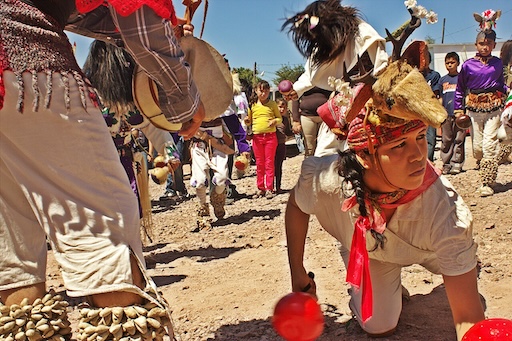 La Danza del Venado – The Sacred Deer Dance of the Yaqui People
La Danza del Venado – The Sacred Deer Dance of the Yaqui People
 Tarahumara Rarámuri – The Ultramarathon Runners of the Sierra
Tarahumara Rarámuri – The Ultramarathon Runners of the Sierra
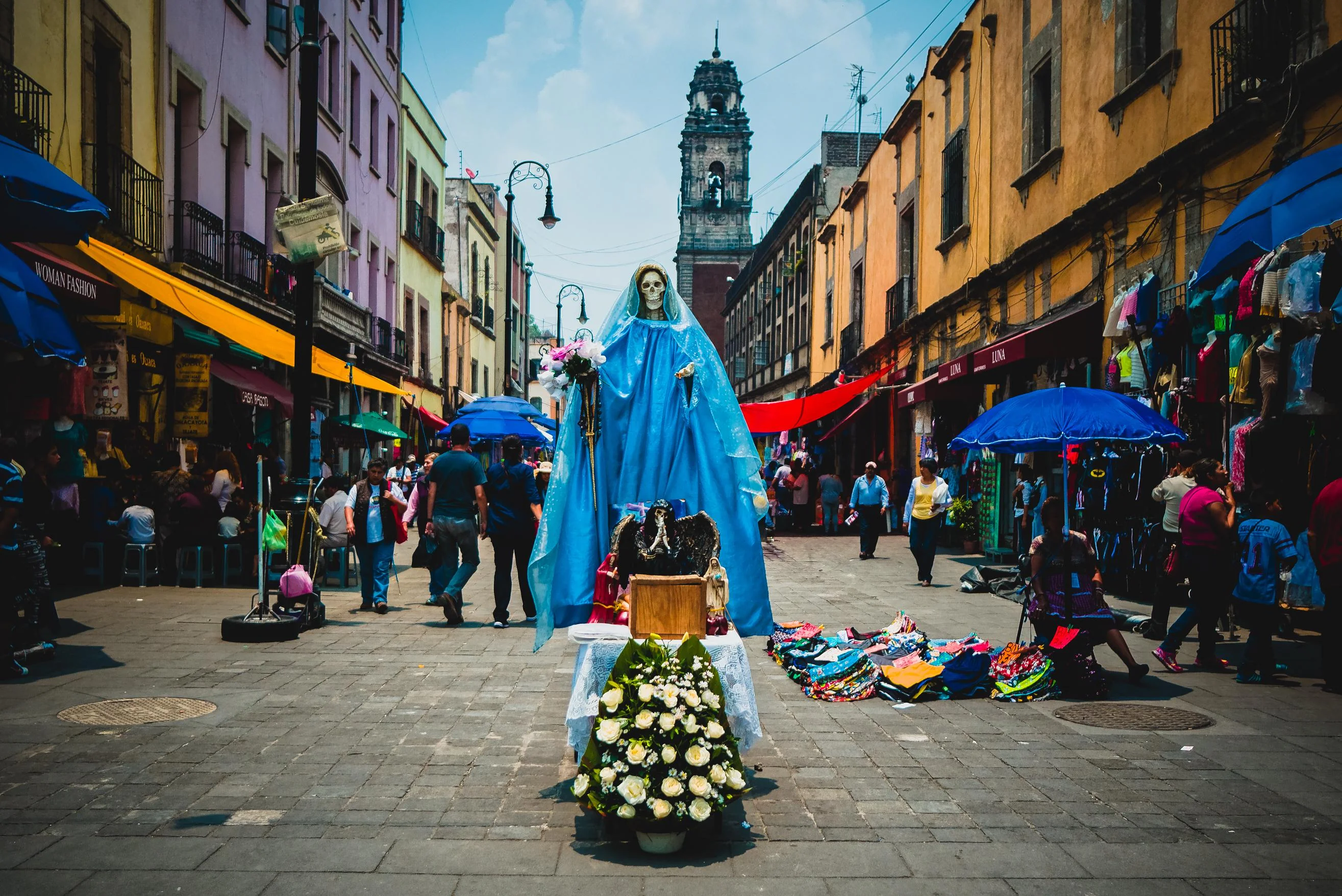 La Santa Muerte – The Controversial Saint of Death
La Santa Muerte – The Controversial Saint of Death
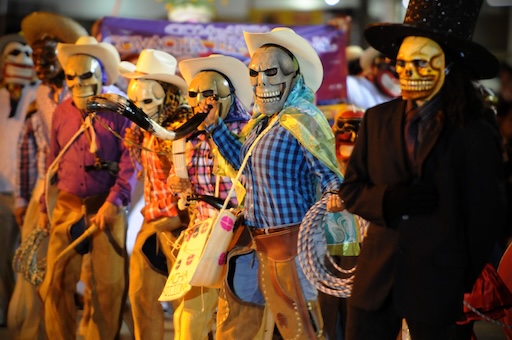 Xantolo – The Huasteca’s Version of Day of the Dead with Masks and Dances
Xantolo – The Huasteca’s Version of Day of the Dead with Masks and Dances
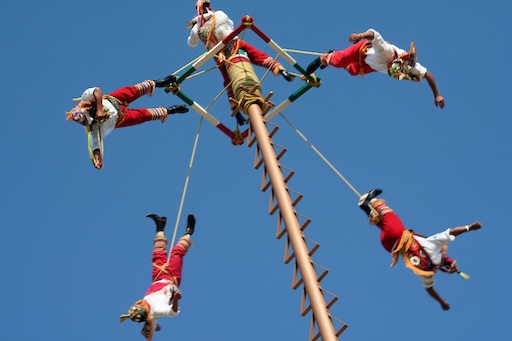 Voladores de Papantla – Men Who Fly from Poles
Voladores de Papantla – Men Who Fly from Poles
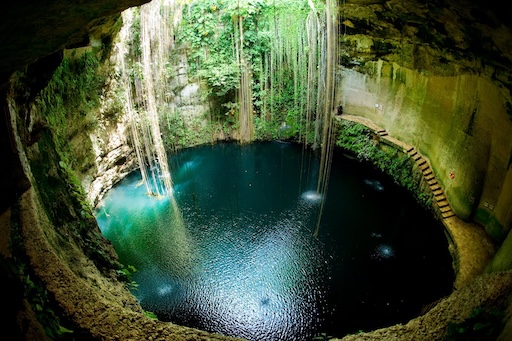 Cenote Sagrado – Sacred Sinkhole of the Maya
Cenote Sagrado – Sacred Sinkhole of the Maya
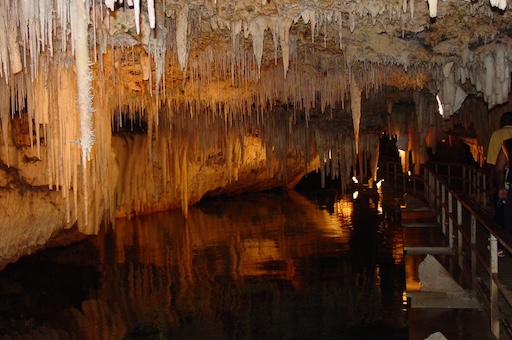 Cueva de los Cristales – Mexico’s Giant Crystal Cave
Cueva de los Cristales – Mexico’s Giant Crystal Cave